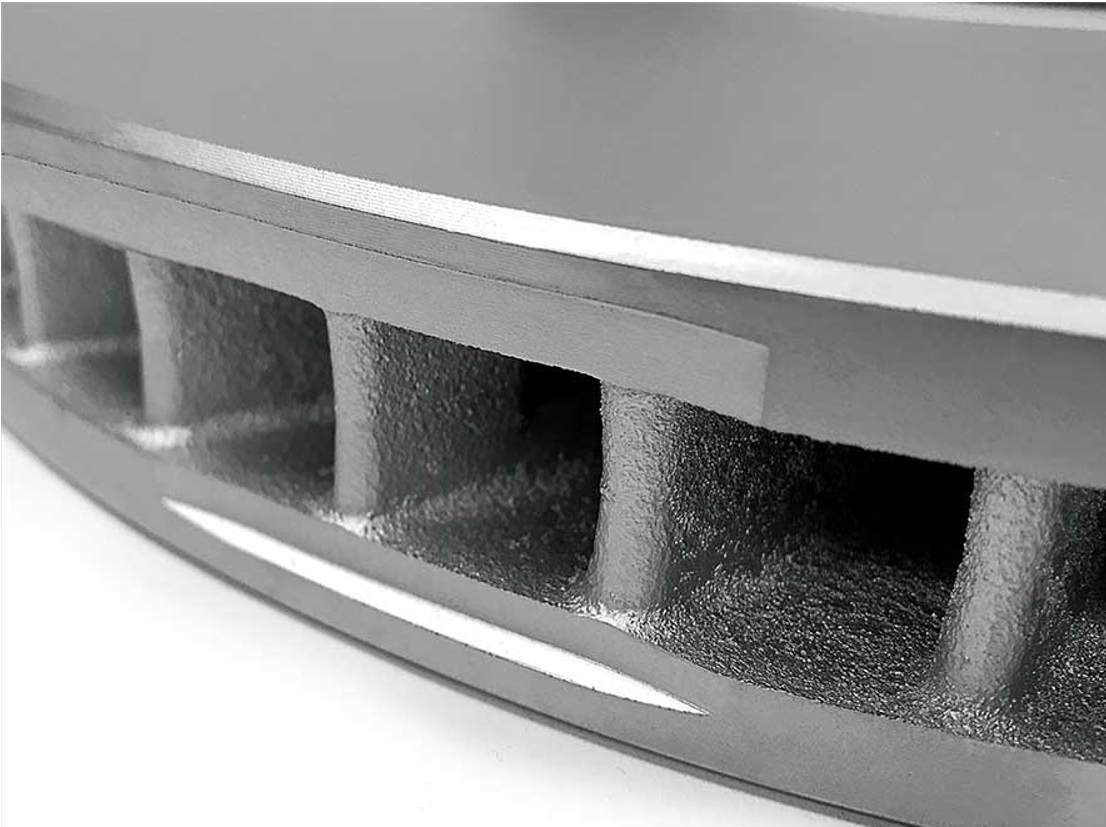When the brake disc rotates with the car hub at high speed, the centrifugal force generated by the mass of the disc cannot offset each other due to the uneven distribution of the disc, which increases the vibration and wear of the disc and reduces the service life, and at the same time, reduces the comfort and safety of the car driving. This is caused by the dynamic imbalance of the brake disc, and it can also be said that the failure is caused by the imbalance of the brake disc itself.
Reasons for brake disc imbalance
1. Design: The asymmetrical geometry of the brake disc design causes the brake disc to be unbalanced.
2. Material: brake discs need to be cast with materials that have superior heat resistance and heat dissipation performance. Materials with poor performance are prone to distortion and deformation at high temperatures during use, causing brake discs to become unbalanced.
3. Manufacturing: In the process of casting, the brake disc is prone to defects such as porosity, shrinkage, and sand eye, resulting in uneven quality distribution and unbalance of the brake disc.
4. Assembly: During the assembly process, the center of rotation of the brake disc and the supporting axis are deflected, resulting in the dynamic imbalance of the brake disc.
5. Use: During normal use of the brake disc, the wear and tear deviation of the surface of the brake disc will also cause the brake disc to be unbalanced.
How to eliminate brake disc unbalance
Dynamic imbalance is the most common imbalance phenomenon, which is a combination of static imbalance and even imbalance. There are many factors that cause brake disc dynamic imbalance, and they are also random, so we can’t calculate them one by one. At the same time, it is affected by the precision of the dynamic balancing machine and the limitation of the rotor, so we can’t completely eliminate the dynamic imbalance of the brake disc and achieve perfect balance. The brake disc dynamic balancing is to eliminate the unbalance of the brake disc to the most reasonable numerical magnitude under the existing conditions, so as to meet the requirements of production life and economy.
If the initial unevenness of the brake disc is large and the brake disc dynamic unbalance is serious, a single-sided balancing should be performed before the dynamic balancing calibration to eliminate the static unbalance. After the dynamic balancing machine detects the size and location of the unbalance during the rotation of the brake disc, it needs to be weighted or de-weighted at the corresponding location. Due to the shape of the brake disc itself, it is very convenient to choose the plane where the center of gravity is located to add and remove weight. In order to ensure the overall quality of the brake disc, we generally adopt the method of milling and de-weighting the side of the brake disc to achieve dynamic balancing.
Santa Brake has more than 15 years of experience in brake disc production, and has a complete brake disc quality control system, from the casting process, material control, machining accuracy, dynamic balancing treatment and other aspects of strict control of brake disc quality, so that our products balance to meet the OE standards, thus greatly reducing the brake shaking problems caused by brake disc quality problems.
Post time: Dec-25-2021
